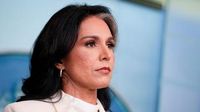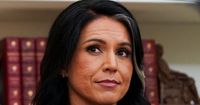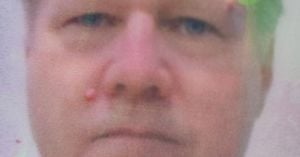On August 18 and 19, 2025, the usually shadowy world of American intelligence found itself thrust into a rare public spotlight. Director of National Intelligence Tulsi Gabbard, newly installed and already making waves, distributed an internal memo to the U.S. Intelligence Community naming 37 individuals whose security clearances, she insisted, needed to be revoked. The move, dramatic in both scope and execution, triggered a firestorm of debate about the politicization of intelligence, the boundaries of secrecy, and the risks of public exposure for those who serve in the shadows.
Among the 37 named was Julia Gurganus, a senior CIA official whose career had spanned decades and whose resume included stints as a national intelligence officer for Russia and Eurasia at the National Intelligence Council (NIC) from 2014 to 2017. According to The New York Post and The Daily Mail, Gurganus had been a public-facing figure for years—writing for outlets like The Atlantic and Foreign Affairs, speaking on high-profile panels, and, as recently as April 2025, appearing as a panelist at the AFCEA's Spring Intelligence Symposium to discuss the Russia-Ukraine war.
Yet, when Gabbard’s memo was posted to X (formerly Twitter) and circulated throughout the intelligence community, it included Gurganus’s name alongside the accusation that she—and the others—had “abused public trust by politicizing and manipulating information in their roles,” as The Post reported. The memo itself did not list specific agency affiliations, but the message was clear: these individuals, Gabbard argued, had crossed a line, and the intelligence community needed to be purged of such behavior.
The timing was no accident. Just days earlier, President Trump had met with Russian President Vladimir Putin in Alaska, and Gurganus had reportedly helped brief Trump’s team before the meeting, according to CNN. The abruptness of her ouster, and the public naming, raised immediate concerns among current and former intelligence officials. Some sources told CNN and The Wall Street Journal that Gurganus had been operating under cover at the time the memo was released, potentially exposing her to personal risk and undermining ongoing intelligence operations.
But was her cover truly blown? That’s where the story gets murky. Senior intelligence officials, speaking anonymously to the Daily Mail, insisted that Gurganus was “an overt analyst, not covert operative, at the National Intelligence Council.” They pointed to her public appearances, published articles, and scheduled conference talks as evidence that her CIA affiliation was hardly a secret. “For years, she used her affiliation with the CIA and the Intelligence Community to write articles, speak on panels, join boards, etc.,” one source told the Daily Mail.
Still, the question of her status wasn’t entirely settled. Some insiders noted that intelligence officers at the CIA routinely move in and out of covered jobs depending on operational needs. According to CNN, a source close to Gabbard disputed the claim that Gurganus was under cover, citing her past public roles, but acknowledged that such transitions can be fluid. Another intelligence source suggested that Gurganus had gone covert only in June, possibly in response to the ODNI’s public releases related to the 2016 Russia election investigation. “After 29 years, they put her undercover, why?” a senior official mused to the Daily Mail.
Regardless, the public naming of Gurganus—and the broader purge—sparked fierce debate within the intelligence community and among outside observers. Some CIA officers complained that Gabbard, who has made “depoliticizing” the intelligence community a central mission, often acts without adequate coordination with the agencies whose personnel she is purging. “There was staff-level coordination between ODNI and CIA—and all other agencies involved—ahead of the revocations letter being sent,” a senior intelligence official told The Post. Yet, others, including three anonymous sources cited by the Wall Street Journal, claimed that “there was no meaningful coordination” before the clearances were stripped.
The Office of the Director of National Intelligence (ODNI) pushed back hard against allegations of mishandling. Gabbard’s deputy chief of staff, Alexa Henning, called reports of an undercover agent being outed “false” on social media. In a statement to CNN, a DNI spokesperson said, “Director of National Intelligence Gabbard directed the revocations to ensure individuals who have violated the trust placed in them by weaponizing, politicizing, manipulating, or leaking classified intelligence are no longer allowed to do so.” The ODNI also emphasized that the decision was coordinated with the White House Counsel’s office and that relevant agencies, including the CIA, were notified in advance.
As for the rationale behind the purge, the Gabbard memo accused the 37 intelligence professionals of “abusing public trust by politicizing and manipulating information in their roles.” Many of those named had been involved in the Obama-ordered Intelligence Community Assessment on Russian interference in the 2016 presidential election—a report that spurred widespread accusations of collusion between Russia and Donald Trump’s campaign. Others had signed a 2019 statement supporting the House Democrats’ first impeachment inquiry into Trump. Gurganus, in particular, was cited in a 2020 Senate report as having actively overseen the production of the “now infamous and highly politicized 2017 Intelligence Community Assessment,” according to The Daily Mail.
The controversy also exposed deeper bureaucratic tensions. Gabbard’s agency, which nominally leads the intelligence community, has clashed with the CIA, led by Director John Ratcliffe. Some in the CIA have accused Gabbard of acting unilaterally and purging personnel without sufficient input from affected agencies. Others, however, see her actions as a necessary corrective to what they view as years of politicization and leaks. “Director Ratcliffe and the President’s entire elite national security team are committed to eradicating the politicization of intelligence and are focused on executing President Trump’s national security priorities, and keeping the American people safe,” CIA spokeswoman Liz Lyons said in a statement to The Post.
Despite the uproar, senior intelligence sources told the Daily Mail that the release of the list was coordinated throughout the intelligence community and that “zero concerns [were] expressed by any of the agencies about the revocations.” Whether that’s the full story remains a matter of debate—especially in a world where secrecy is the norm and public accountability is often in short supply.
For now, the episode stands as a stark reminder of the fraught intersection between national security, politics, and the public’s right to know. As the dust settles, one thing is clear: the lines between covert and overt, between public trust and political loyalty, have never been blurrier.





